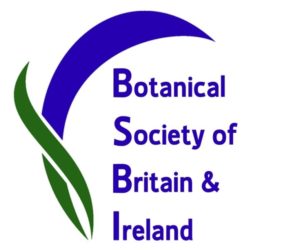Kirkcudbrightshire Botany Group, Fell Quarries and Kirkmabreck Church, 20th September 2019
Fine weather greeted us for this the penultimate meeting of 2019. Six of us drove up a tiny, steeply uphill road to the quarry site which sits above the obvious (from the A75) Creetown quarry. There were 4 deep quarry pits to explore, taking great care not to slip into deep water or get too near the edge of one vertical pit. We started with both gorses, Western Gorse Ulex gallii and Common Gorse U. europaeus, clearly distinguishable by the degree of prickliness, density of leaves/spines and degree of green-ness. There followed a long discussion over a small, round-headed pink-flowered plant with slightly lobed stem leaves; only when Jim compared it with the adjacent Sheep’s-bit Scabious Jasione montana did we realise that this too was the same scabious which is normally a deep bright blue. Hawkweeds Hieracium agg. were common on the rock faces and spoil heaps – no attempt was made to ID them. Two of the pits had obvious shallow water where there were abundant Water Horsetail Equisetum fluviatile, Bog Pondweed Potamogetom polygonifolius, Common Duckweed Lemna minor, Alternate Water-milfoil Myrriophyllum alternifolium and Water-starwort Callitriche stagnalis agg. A few scattered shoots of Bottle Sedge Carex rostrata amongst the dense horsetail stands surrounded a puzzling larger leafed and darker green sedge with a long acute ligule. Later examination showed this to be Bladder Sedge C. vesicaria.
The surrounding clutter of discarded rocks and the spoil heaps had Trailing St John’s-wort Hypericum humifusum, Fairy Flax Linum catharticum, Bell Heather Erica cinerea, a little Heather Calluna vulgaris, both Early and Wavy Hair-grasses Aira praecox and A. caryophyllea, Dove’s-foot Cranesbill Geranium molle in flower, scattered Lady’s Bedstraw Galium verum and surprisingly one small clump of Parsley Fern Cryptogramma crispa with both vegetative and fertile fronds. We lunched here and then started downhill towards the clump of trees in the mid-distance, downstream of the ruined Blackmyre Farm and adjoining mill.
After one abortive attempt to reach the abandoned Kirkmabreck Church and graveyard by a marked route through a field with cows, calves and a large brown bull, we managed to circumvent this field to reach the site. The graveyard is bounded by very mature trees including presumably planted Horse Chestnut Aesculus hippocastaneum, Common Lime Tilia x europaea and a couple of Yews Taxus baccata. The church is denoted by a few remnant walls supporting Maidenhair Spleenwort Asplenium trichomanes and not much else. In addition to plant hunting we spent some time looking at the mostly lichen-covered gravestones which seemed to date from about 1770 to 1900.
Over the march dyke we spotted a marshy area and accompanying burn that looked interesting, which indeed it was. The ground was severely poached and hummocky with interspersed deep soft mud which one of the party experienced at first hand, or rather foot and leg. The site instead supported a wide selection of sedges; Common Yellow-sedge Carex demissa, Brown Sedge C. disticha, Glaucous Sedge C. flacca, Tawny Sedge C. hostiana, Long-stalked Yellow-sedge C. lepidocarpa, and Common Sedge C. nigra. There were a few strands of Bog Pimpernel Anagallis tenella, Marsh Pennywort Hydrocotyle vulgaris and Round-leaved Crowfoot Ranunculus omiophyllus still in flower. The tiny burn had carpets of Brooklime Veronica beccabunga with its bright blue flowers, Water-cress Nasturtium officinalis agg., and Fool’s Water-cress Apium nodiflorum with its pinnate leaves. There was a scattering of Water Mint Mentha aquatilis and its close relative Corn Mint M. arvensis with its lilac axillary whorls of flowers and a more pleasant scent to the crushed leaves than the first species.
A steady walk back to the cars picking up bare ground plants such as Heath Cudweed Gnaphalium uliginosum and Pineappleweed Matricaria discoidea, along with grasses such as Timothy Phleum pratense, Perennial Rye-grass Lolium perenne and Crested Dog’s-tail Cynosurus cristatus and Equal-leaved Knotgrass Polygonum arenastrum. And that was that, apart from appreciating the splendid views across Wigtown Bay towards Garlieston and Isle of Whithorn in the adjoining VC.
Usual figures – 136 species, no rarities but a nice selection of species. And gloriously warm, almost hot, dry weather.
David Hawker
BSBI county recorder for Kirkcudbrightshire VC73

